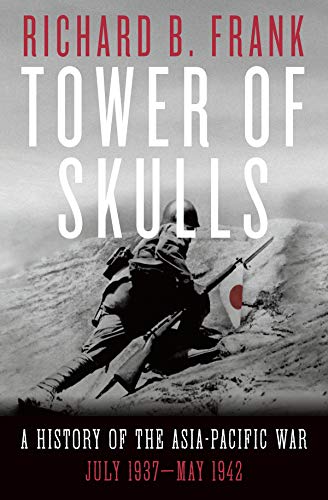Arts & Entertainment
Allen Boyer: Review of ‘Tower of Skulls: A History of the Asia-Pacific War’

A superb book of military history – the first of a trilogy on how the Second World War raged across the Pacific – “Tower of Skulls,” by Richard B. Frank, breaks forcefully with two conventions of American military history.
First, “Tower of Skulls” treats the Pacific as the most important theatre of the Second World War, a place where conflict wrought greater changes than the war in Europe. Second, it does not treat the war between China and Japan, which flared up savagely in 1937, as a prelude to the war that began at Pearl Harbor.
On the night of July 7, 1937, when the Japanese garrison in Beijing provoked a firefight with Chinese forces, the Red Army of Mao Zedong mustered “roughly 30,000 ill-armed men.” By contrast, the Nationalist Chinese forces loyal to Generalissimo Chiang Kai-shek had a solid core of 300,000 soldiers – trained by German officers, favored by the Soviets. The war changed the course of global history. By 1949, the Communist Party would rule in Peking.

Frank writes:
“The war launched China into a calamitous four-decade upheaval in which it soared to a triumph of great power status … This volume attempts to restore the notion of a ‘Heroic China’ carrying on in the face of Japanese aggression, with horrific levels of death and destruction and with very sparse international support. That achievement marked a decisive shift from a century or more of China’s inability to sustain hostilities with any industrialized power.”
The title of the book comes from the Bengali poet Rabindranath Tagore, who wrote in 1938 that the Japanese vision of a new Asia “would be raised on a tower of skulls.” It speaks to the series of atrocities that the war would bring. Shanghai would be laid waste first, in long weeks of fighting, after which the Japanese pressed inland to Nanjing.
Their victory there ended with the infamous Rape of Nanking, a murderous month-long spree of looting, arson, rape, and mass executions. Hong Kong would suffer the same, and Singapore.
In one bitter, little-known episode, to slow the Japanese advance, Chiang Kai-shek’s men breached the levees along the Yellow River. The result was the single worst catastrophe of the war: half a million peasants drowned or starved. The survivors joined a swelling tide of Chinese refugees, 45 million in all.
Frank, who saw combat in Vietnam with the 101st Airborne Division, is the author of Guadalcanal and Downfall: The End of the Japanese Imperial Empire. Adroitly and succinctly, he sketches how crucial operations and battles were fought: the massive airstrikes at Pearl Harbor, an attack planned and staged in four short months, so quickly that American intelligence had no time to grasp what was underway; the Japanese blitzkrieg that conquered Malaya, where Japanese infantry infiltrated rigid British defense lines, and Japanese tanks smashed through a series of British roadblocks.

The book ends at sunset on May 6, 1942, when American and Filipino troops on Corregidor surrendered. At that high-water mark, Japanese forces had conquered more than 516 million people. The Japanese controlled what they long had coveted, the oilfields of the Netherlands East Indies. They had routed and captured armies; they had sunk every fleet that faced them, never themselves losing a ship larger than a destroyer. Imperial rule ran across seven time zones – west to India, south to the Solomon Islands, as far east as Tarawa.
Frank emphasizes that solid logistics will beat exemplary tactics. British commander Bill Slim, who masterminded the difficult 900-mile retreat from Burma, learned a crucial lesson from a veteran Chinese officer.
“The great Japanese weakness rested in their very thin logistical margins. If a Japanese advance could be contained for nine days, and they were denied the opportunity to seize Allied supplies, they were then highly vulnerable to counterattack.”
Adopting this approach, Slim would become the only Western general ever to win a land war in Asia.
Eminently readable, deeply and intelligently sourced, masterful in tying the course of war to the politics, economics, and society surrounding it, this book counts as a masterpiece.
“Tower of Skulls: A History of the Asia-Pacific War – July 1937-May 1942.” By Richard B. Frank. W. W. Norton & Company. 751 pages. $40.
Allen D. Boyer is Book Editor of HottyToddy.com. A native of Oxford, he is the author of “Rocky Boyer’s War: An Unvarnished History of the Air Blitz That Won the War in the Southwest Pacific,” based on the Pacific War diary of his father (Naval Institute Press).

















You must be logged in to post a comment Login